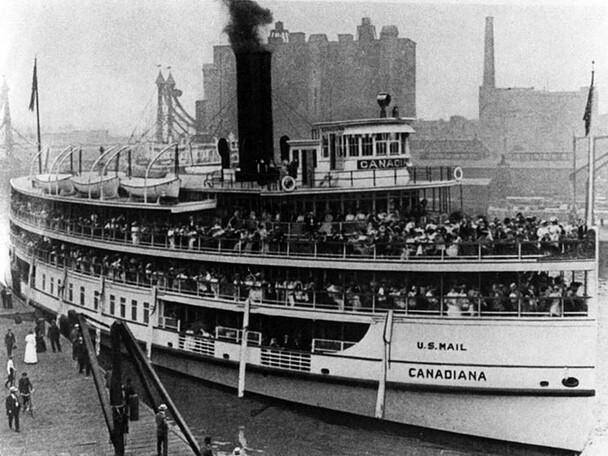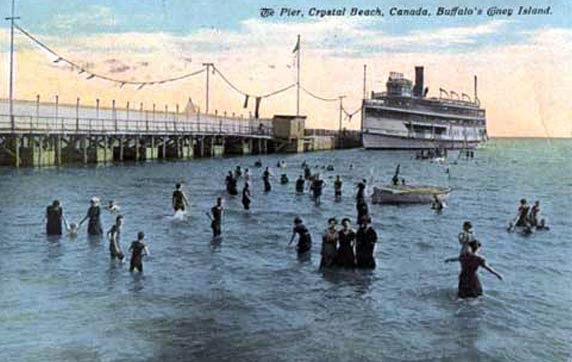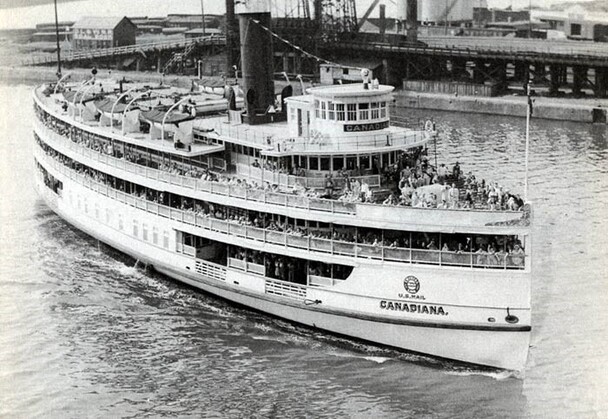Designed by respected architect, Frank Kirby (who also designed the Greater Buffalo) and built in Buffalo at the Buffalo Dry Dock Company on Ganson Street at a cost of $250,000, the coal-fired steamship Canadiana was owned by the Lake Erie Excursion Co. The Canadiana and its sister, the Americana (1908), were known as the Crystal Beach boats.
The Canadiana was 216 feet long with a 56 foot beam; it was steel-hulled with a three-deck wooden superstructure. Its 974-ton bulk was powered across the lake by a 1,446 horsepower triple-expansion steam engine, whose workings were visible to passengers through an opening in the main deck.
Taking the Canadiana and the Americana to Crystal Beach quickly became a summertime traditon for Buffalonians. A 1911 advertisement promoted the 25-mile, 75 minute lake ride for 25 cents. For passengers the ride was part of the total holiday experience. They enjoyed the promenades, benches, bandstand, hardwood dance floor. At night, the Canadiana's 1,000 lights made the trip back to Buffalo magical.
The boat could carry 3,500 passengers, but after the Peace Bridge opened in 1929, the days of both the Canadiana and the Americana were numbered. The Americana was sold in 1929. The Canadiana soldiered on, with ticket prices kept low in order to attract the 2,000 passengers per trip needed to meet expenses. But the 1956 season was the last and the boat was sold, briefly seeing service in Ohio. It was sold a number of times after that until it ended up resting on the bottom of the Cuyahoga River in Ohio.
In 1983-84, the Buffalo organization "Friends of the Canadiana" raised funds to re-float and purchase the boat, towing it to Buffalo in 1984. Difficulties, mishaps and lack of resources eventually led to a downsizing of the dream of restoring the boat. It was slowly dismantled; the pilot house and other parts were stored at BIDCO (formerly Buffalo Dry Dock). The steel hull, engine, and steel main decks were towed to Port Colborne, Ontario in 1987, where it remained for years. There, all but the engine was cut up for scrap.













